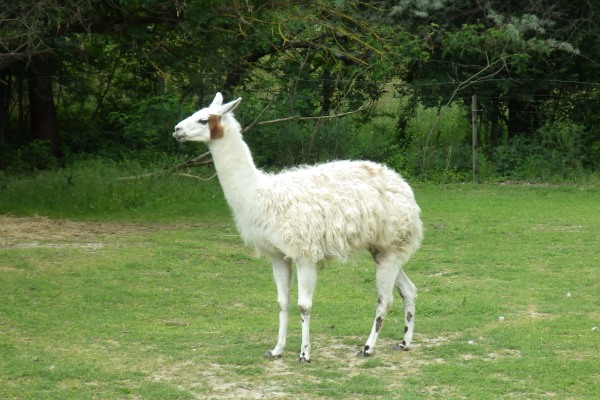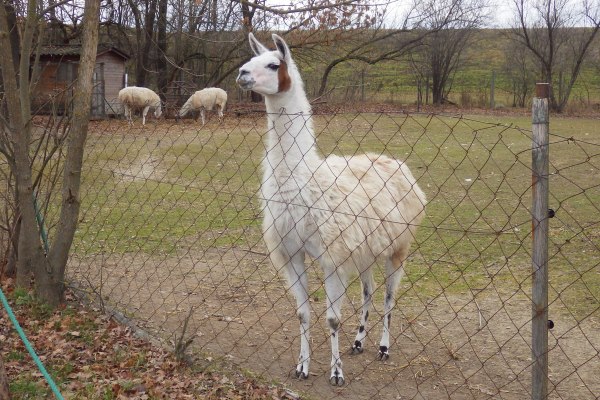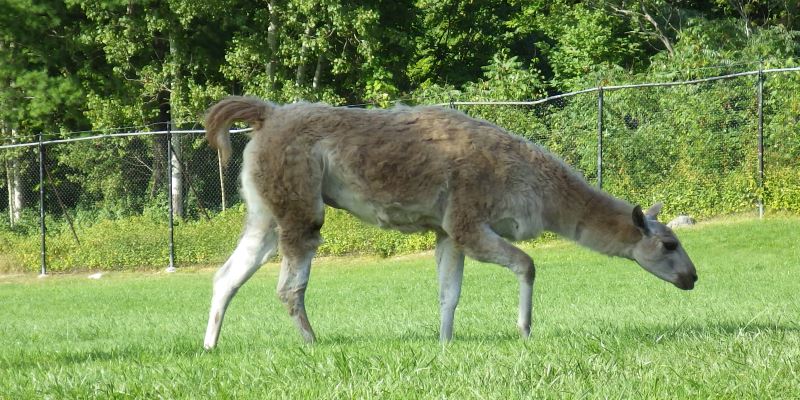The llama is the most well-known South American domestic camelid.

Llama (Lama glama), Szeged Zoo.
The llama is valued for its meat, its wool and as a beast of burden since South Americans had nothing bigger and stronger that could be easily domesticated so the llama was their only animal that could carry anything heavy.

Llamas will also protect the herd against predators, even if the herd does not consist of other llamas but some other animals such as sheep. Thus llamas can be used as guards for herds of other animals.

Llama frolicking in the Toronto Zoo.
This display is actually in the old giraffe exhibit which is geographically incorrect for a llama.
Llamas and their close relatives the vicuñas and alpacas have various adaptations to high altitude where the air is very thin and getting oxygen is not as easy as at sea level.
The hemoglobin in the llama’s blood binds oxygen better and there are various anatomical differences in their heart and lungs to allow more efficient pumping and oxygenation of their blood. Interestingly some humans show similar adaptation to high altitude.
The wild ancestor of the domestic llam is called the guanaco.
Further Readings:
Animal adaptations according to altitude.
Llama on Wikipedia.
Scholarly Articles:
Guard Llamas A part of integrated sheep protection.
Pulmonary circulation of the llama at high and low altitudes.
Oxygen binding properties, capillary densities and heart weights in high altitude camelids.
Oxygen transfer properties and dimensions of red blood cells in high-altitude camelids, dromedary camel and goat.
Some humans show an adaptation to high altitude similar to llamas:
Human llamas: adaptation to altitude in subjects with high hemoglobin oxygen affinity.


